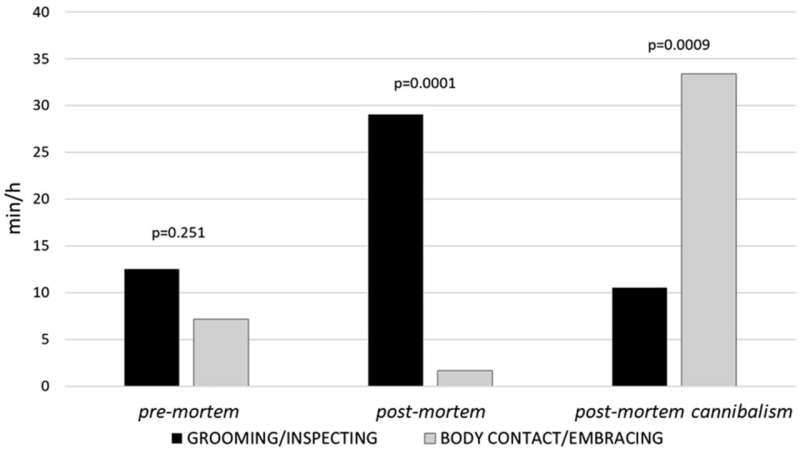Evidence of infant cannibalism found in a drill monkey

A trio of ethologists at the University of Pisa has documented and analyzed an instance of infant cannibalism in a drill monkey. In their paper published in the journal Primates, Grazia Casetta, Andrea Paolo Nolfo and Elisabetta Palagi describe the scenario recorded on videotape and offer possible explanations for the behavior they witnessed.
Observations of instances of infant cannibalism in primates is rare—when it has been observed, it has almost always been of a mother consuming her offspring after it has died. That was the case with this new observation as well. In this instance, the researchers documented an adult female drill—a type of monkey that looks similar to a mandrill. They are native to the rainforests of Nigeria, Cameroon and parts of Equatorial Guinea and are considered to be endangered. They are also omnivorous.
The instance of cannibalism was observed and recorded by staff at the park. They sent what they found to the research team for analysis.
The focus of this effort, a young female, gave birth to a male at the Dvůr Králové safari park in the Czech Republic. Eight days later, for unknown reasons, the infant died. Following the death, the mother, named Kumasi, carried the dead infant around in the enclosure. Other monkeys in the troop came by to inspect the dead infant and to communicate with Kumasi.
Kumasi carried the dead infant for two days. The first day, she carried it as if it were still alive, stopping periodically to peer into its eyes to see if she could find a reaction. Finding none, she would roam around the pen carrying the corpse with her. On the second day, Kumasi appeared to have come to grips with the reality of the death of her infant. She carried it with less care and then at one point, she picked a spot in the pen, sat down, and began tearing flesh from its body which she placed into her mouth. She seemed bent on consuming the entire corpse, but park staff intervened, entering the pen and collected the remains.
The researchers suggest that the reason the monkey ate her dead infant was to recover more rapidly from the rigors of giving birth, thereby increasing her potential for mating and reproducing again as soon as possible.
More information: Grazia Casetta et al, Record of thanatology and cannibalism in drills (Mandrillus leucophaeus), Primates (2023). DOI: 10.1007/s10329-023-01075-8
Journal information: Primates
© 2023 Science X Network
Researchers observe instance of cannibalism in wild white‐faced capuchin monkeys
No comments:
Post a Comment